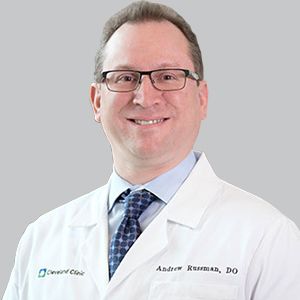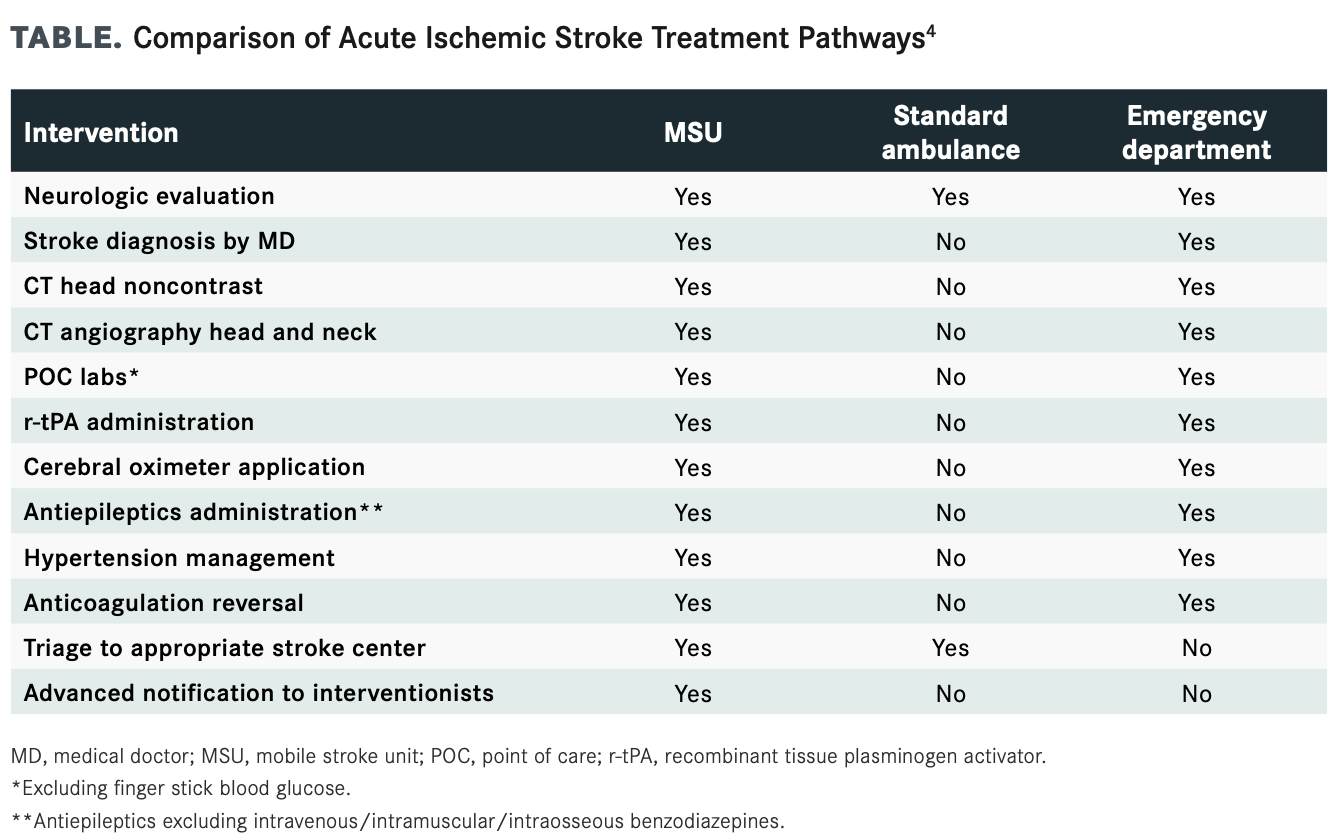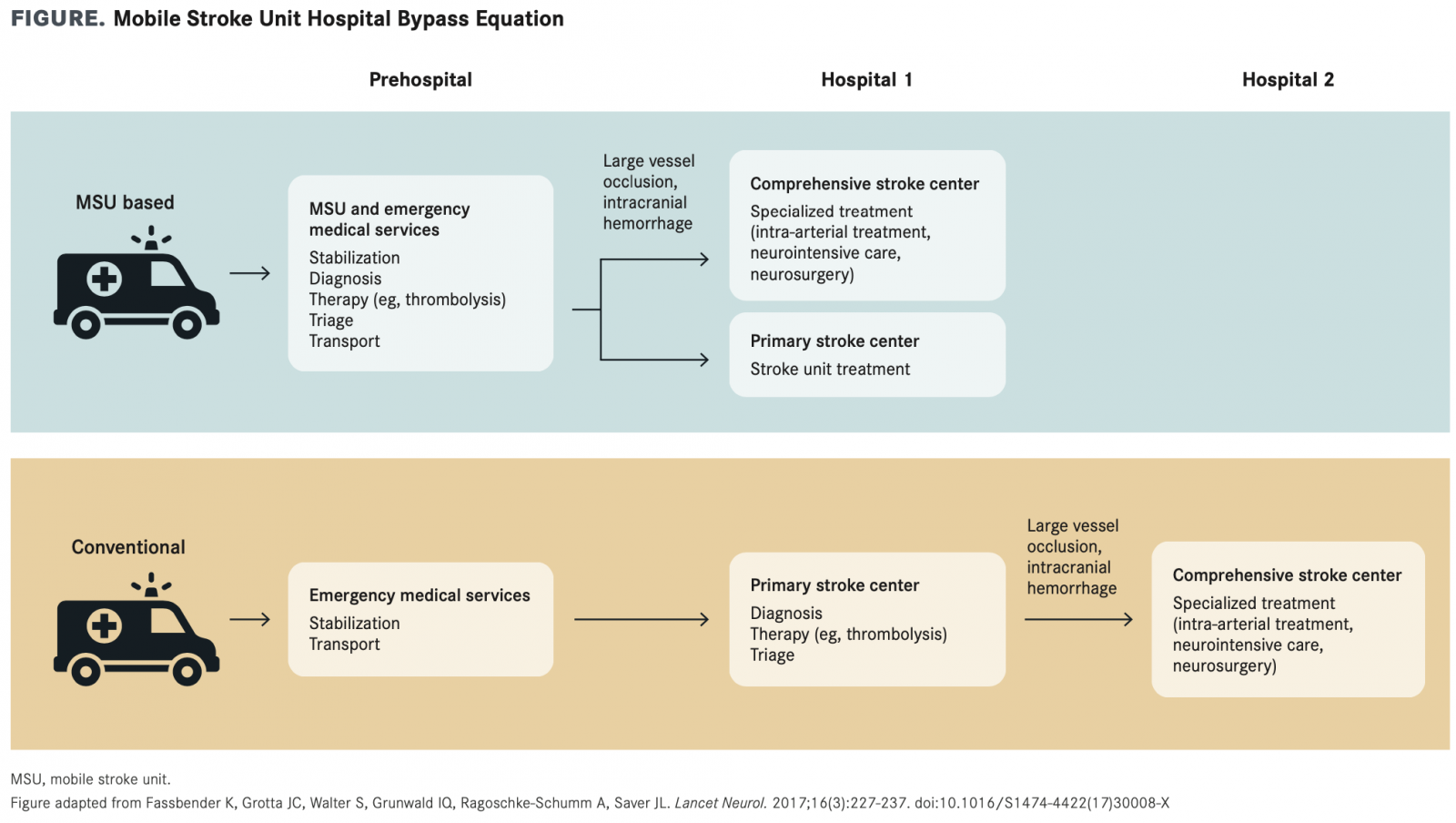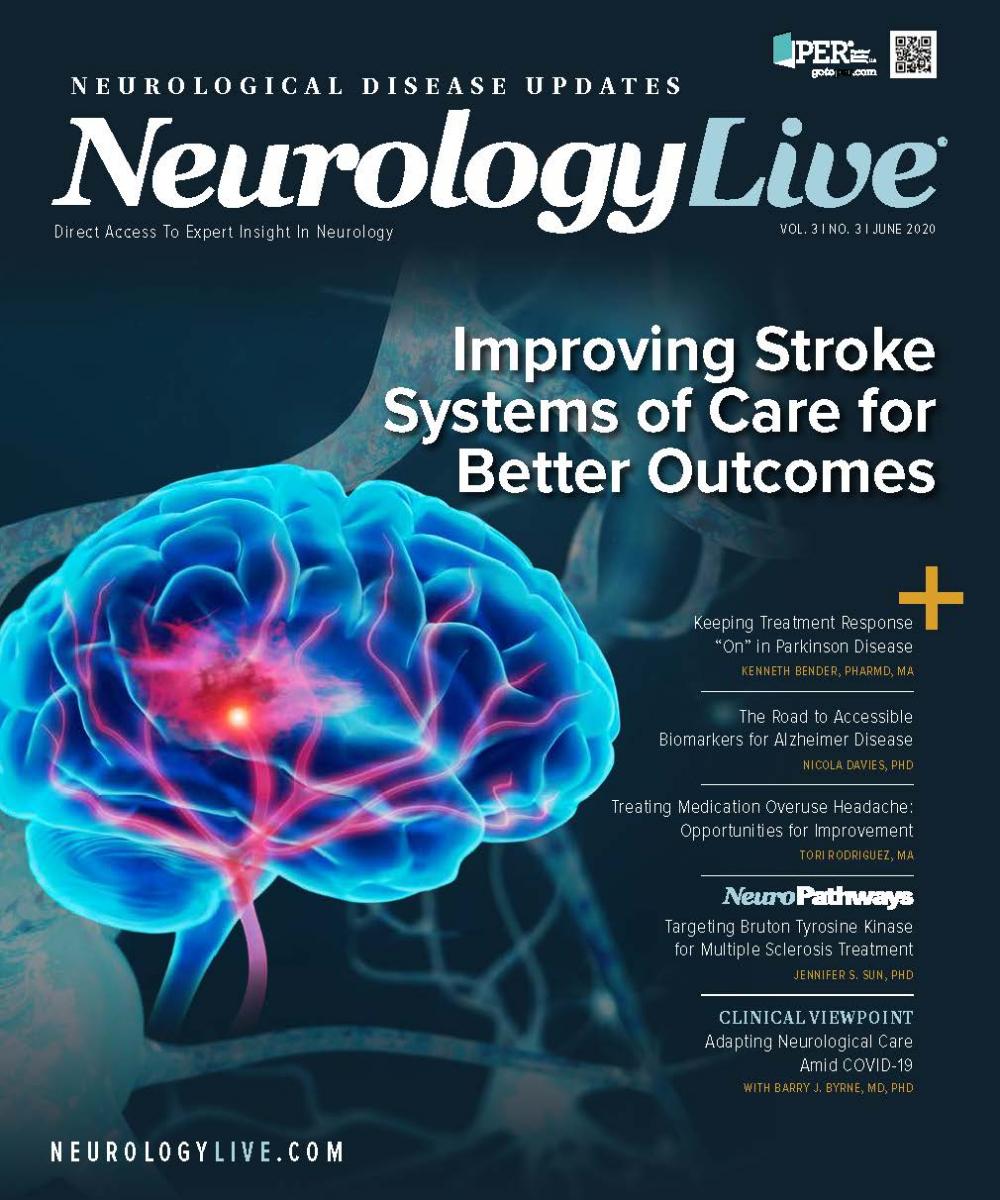Publication
Article
NeurologyLive
Improving Stroke Systems of Care for Better Outcomes
Author(s):
The “time is brain” mantra continues to drive innovation in a specialty that will not settle for mediocrity.

Andrew Russman, DO
Developments in stroke care over the past decade have significantly altered outcomes for patients with stroke thanks to the efficacy of clot-busting drugs such as tissue plasminogen activator (tPA) and thrombectomy procedures to remove large clots. The key factor in preventing stroke mortality and disability is time, as every minute without blood flow irrevocably damages brain tissue. As a result, some of the biggest developments in stroke management have focused on logistical strategies to reduce the time between stroke onset and point of care, from the ambulance call to the emergency department bay.
Despite this, much debate exists over how to appropriately route patients with suspected large vessel occlusion (LVO) stroke to hospitals capable of thrombectomy interventions. Many factors play into this challenge, as it involves a major shift in systems of care. Advancements in prehospital prediction of LVO, impact on clinical outcomes, state regulations, and barriers to reimbursement are all major parts of the puzzle that can make or break the adoption of these lifesaving systems.
Mobile Stroke Units
Many hospitals are now outfitting mobile stroke units (MSUs) with special equipment and trained health care personnel to initiate stroke treatment at the point of pickup.1 In an interview with NeurologyLive®, Andrew N. Russman, DO, head of the Stroke Program and medical director of the Comprehensive Stroke Center at Cleveland Clinic in Ohio, explained that for lack of better words, MSUs are ambulances on steroids. “The 4-person crew includes a CT technologist, a nurse, a paramedic, and an [emergency medical technician]. They have 2-way audio-visual communications with a stroke neurologist and the ability to deliver clot-busting drugs in the field. They have CT scanners and laboratory testing, which brings many of the capabilities of an emergency [department] to the patient’s doorstep. We perform prehospital stroke severity assessments to determine the right hospital to take the patient to for further care.”
Russman pointed to 2 recent abstracts presented at the 2019 American Academy of Neurology Annual Meeting and the 2020 International Stroke Conference that demonstrated that mobile stroke care is associated with reduced time to treatment and possibly better outcomes.2,3 With the ability to administer tPA upon arrival at the patient’s doorstep, MSUs effectively reduce stroke treatment times without additional risk of adverse events. At the same time, the MSU team can evaluate the stroke severity to determine the presence of an LVO requiring thrombectomy (TABLE).4

“We already know that retrieval of the clot is associated with a very significant improvement. If you look at emergent medical treatments in general, thrombectomy of large vessel occlusion in stroke is one of the most beneficial emergent therapies in medicine. It’s comparable to what angioplasty of a coronary artery does for a patient with ST-elevation myocardial infarction,” Russman said, adding that not only do MSUs reduce “the transport time, but they are incredibly efficient compared with traditional emergency departments. They can usually deliver intravenous tPA 30 to 40 minutes faster than a patient could get it if they were transported to an emergency department.”
James C. Grotta, MD, is director of stroke research and the mobile stroke unit consortium at Memorial Hermann-Texas Medical Center in Houston, which covers about 75% of the entire city. “Although we have a catchment area of about an 8-mile radius, we monitor the fire department radio. If there’s a stroke that occurs 20 miles away, we take advantage of a rendezvous system more than other cities do,” he told NeurologyLive®.
“We monitor 911 calls and contact the fire depart- ment medic if we think the patient might be a candidate for the mobile stroke unit. Then we’ll rendezvous with the ambulance halfway to their destination hospital. The inclusion of rendez- vous calls expands our treatment radius to an average of 13 miles.”
Grotta and his colleagues at Memorial Hermann are currently conducting an MSU randomized trial. Every patient they transport is automatically enrolled into the trial. Follow-up data on all patients are collected after they get to the hospital and for a full year thereafter. “That means we can deliver patients to hospitals only where we can obtain a research agreement, usually by being on the staff,” Grotta explained. Although the city is home to several competing health care systems, including Houston Methodist, Baylor St. Luke’s Medical Center, Harris County Public Health, and the Hospital Corp of America Houston Healthcare, the Houston MSU program has been able to work out agreements with all of them and their hospitals.
“Every time we transport a patient, we’re out of service for another call, so if we know that a patient will not fit into the trial, we don’t respond to the call, and the patient is transported by the fire department per their routine,” Grotta explained. “The Houston MSU rotates between 2 sites within the city on a weekly basis.
The week the MSU is in operation on one site, patients within the catchment of the other site are managed by the fire department, per their standard management, and are enrolled into the trial as the control group.” Trial enrollment will be complete when they reach 1038 patients, which is expected soon.
The main limitations of MSUs are the extensive costs to equip and maintain them. For instance, the New York metropolitan area has MSUs at Stony Brook University Hospital in Long Island, at NewYork-Presbyterian Hospital in Manhattan, and 2 others in Brooklyn and Queens; New Jersey has one in Trenton, and Pennsylvania has another in suburban Philadelphia. Connecticut does not have any. “It is very expensive to operate an MSU, and currently, it’s not fully reimbursable,” Grotta said. “And while we believe in the value of the MSU to stroke care, it hasn’t been proved yet. If our study can show that, it would open the door to appropriate reimbursement, which would facilitate establishing more of them.”
The Bypass Equation
The MSU becomes a critical factor in determining which patients should be taken directly to comprehensive stroke centers with endovascular thrombectomy (EVT) capabilities. These interventional treatments have been in use for decades, but only in the past 4 years have study results shown benefits up to 24 hours after symptom onset, Russman said. “You have to be able to figure out in the field that they might have a large vessel occlusion. Mobile stroke care takes this to another level because we can deliver the clot-busting medicine at the scene and deliver the patient to the right hospital the first time,” he said.
This is where hospital bypass becomes important. When patients have a significant blockage, emergency medical services (EMS) takes them directly to an EVT center, often driving past a closer hospital that does not have EVT capabilities, Russman said. “Identifying this need in the MSU spares the patient from being transferred to a second hospital, which causes a significant time delay,” he added (FIGURE).

The latest policy statements from the American Heart Association5 suggest that EMS should drive an extra 15 minutes to get to an EVT-capable center for patients who have prehos- pital stroke severity scale scores suggestive of LVO. “Time is brain, so for every minute the brain goes without blood flow, 1.9 million neurons are dying,” Russman said. “If you are having a severe stroke and live in a community that doesn’t have a stroke center with thrombectomy capability, then EMS should bypass the closest hospital to get you directly to the hospital that does have thrombectomy capability, as long as you don’t have to drive more than 15 minutes extra, according to the current recommendations. That time you’re saving—15 to 30 minutes or more— means reduced disability for the patient.”
The bypass model significantly reduces time to thrombectomy for patients with the most severe strokes. A large study of 1941 US stroke centers1 found that 713 (37%) had EVT capabilities, which an estimated 61 million (19.8%) Americans could access within 15 minutes. Extending the time frame to 30 minutes meant access for 95 million (30.9%) individuals. This varied by state. In Texas, an estimated 22% of the state’s population lives within 15 minutes of the 65 existing EVT centers. Rates in New York were 20.9%; in California, 25.5%; and in Illinois, 15.3%.1 A study coauthored by Grotta6 supported these data, demonstrating that following prehospital assessment by EMS of a suggested LVO and appropriately bypassing to hospitals within this 15-minute margin for thrombectomy increased EVT access to millions of people.
Grotta pointed out that “the problem with bypass is that most ambulances do not have CT scanners that the MSUs have. Without an [MSU], you have to rely on the medic’s judgment, and using imprecise grading scales in the hands of medics is not all that reliable and will miss LVOs.” Although taking a patient who does not need EVT to a comprehensive stroke center is not efficient, he noted, it is a better alternative than missing patients who do need it. The added benefit is that for patients who do not have CT evidence of an LVO, the trained team in the MSU can immediately begin tPA treatment en route to the primary stroke center.
Time Versus Probability of LVO
The decision to bypass rests on a balance of 2 factors: time versus the probability of an LVO, according to Grotta. “Within Houston, almost all hospitals are comprehensive stroke centers, so for us, bypass is not a big issue. In more rural or suburban areas, the MSU staff will have to weigh the evidence of an LVO against the time it will take to get to an EVT stroke center,” he said. This represents the crux of the current debate over MSUs, as the average ambulance team is simply not equipped to make these decisions. On a standard EMS call, in settings where an EVT-capable hospital is farther away than a local primary stroke center, EMS will often take the patient to the closer hospital first for an evaluation, only to have the patient transported again for thrombectomy. “In our MSU, we do a CT angiography for anybody we suspect of having a larger artery stroke. If it shows that the patient has an LVO, we take them directly to an endovascular center. It doesn’t matter how far it is,” Grotta said. “In reality, about 80% of the US population lives in urban areas, so bypass does not really present as much of an issue in metropolitan areas.”
Should More Hospitals Become EVT Capable?
Although certain urban areas are successfully implementing MSUs and bypass, health providers must modify their use in each community to meet the specific demands of the population. Geography, topography, state regulations, and political climate all contribute to the type of systems that are needed to succeed.
The models suggest 2 main solutions: to expand availability of MSUs or convert more hospitals into EVT stroke centers. The current distribution of thrombectomy-ready hospitals would suggest that conversion, or “flipping,” of standard non-EVT stroke centers to ones that are EVT capable would solve the problem. However, this comes at a sacrifice to other types of care and with high costs that have to be justified by need within a community. The Sarraj study6 reported that almost one-fifth of Americans have direct access to EVT centers. Their predictive model estimated that nationwide, flipping the top 10% non-EVT centers to EVT-capable ones in all states would result in an increase of 7.5% in 15-minute direct access. This was less than half of the gain in coverage of 16.7% achieved by bypassing non-EVT centers for existing thrombectomy centers by 15 minutes.6
For the most part, MSUs have not been evaluated in rural areas and might present a time solution there. “Generally, if you know that it’s an LVO, it’s better to just travel to a thrombectomy center than to turn more hospitals into them,” Grotta said. “Through rendezvous with EMS units farther out, the MSU would end up getting the patient treated with tPA halfway to the stroke center, saving half the time of the long drive; but all of this is modeling. It needs to be proved in real-world settings.”
Looking Forward
Everything boils down to getting the right patient to the right treat- ment in the shortest amount of time. As studies evaluate the benefits of MSUs, states and communities also need to consider whether building more stroke centers with thrombectomy capability makes more sense than rerouting more patients to the centers that already exist.
The policies for a given region need to be more clearly exam- ined and identified, Russman suggested. “Bypassing one hospital for another has a lot of political and financial ramifications, which is why states have to lay down EMS triage, transfer, and destination protocols. You have to have the right system to bypass hospitals, taking into account time and distance factors to get to the hospital, with the capability that you need. Most states do not require that stroke severity scale scores be factored into the destination decision, nor do they provide directions to EMS agencies that hospital bypass is needed to get the right patient to the right hospital the first time,” he said.
Grotta agreed. “Everybody is looking at these questions, and there are no 1-size-fits-all solutions,” he said. “If we were to recommend a strategy within a dense metropolitan area, it would be to bring everybody to the comprehensive stroke center. But the right fit definitely reflects geographic and population differences.” Using the example of Connecticut, which has several large cities surrounded by suburban and rural populations and no MSUs, he suggested, “If you’re in an area that’s busy enough that patients are being bypassed to Hartford and New Haven all the time, then you might be better having physicians in your area learn to do thrombectomy because they might have enough local cases, and then it would be better to convert the hospital to an EVT center.”
Ultimately, Russman and Grotta concluded that each county in each state should make its own determinations of what is best for their populations. The current studies under way will help point the direction to building systems that function best in each area.
REFERENCES
1. Yamal JM, Rajan SS, Parker SA, et al. Benefits of stroke treatment delivered using a mobile stroke unit trial. Int J Stroke. 2018;13(3):321-327. doi:10.1177/1747493017711950. Published correction appears in Int J Stroke. 2018;13(3):NP4. doi:10.1177/1747493017743617
2. Russman A, Shimbo D, Sheikhi S, et al. Clinical outcomes after pre-hospital thrombolysis on a mobile stroke unit. Neurology. 2019;92(suppl 15):S57.004.
3. Ebinger M, Siegerink B, Kunz A, et al. Effects of pre-hospital acute stroke treatment as measured with modified Rankin scale; the Berlin — Prehospital Or Usual Care Delivery (B_PROUD) trial. Presented at: 2020 International Stroke Conference; February 19-21, 2020; Los Angeles, CA. Abstract LB2. Accessed May 1, 2020. https://www.abstractsonline.com/pp8/#!/7927/presentation/5405
4. Ehntholt MS, Parasram M, Mir SA, Lerario MP. Mobile stroke units: bringing treatment to the patient. Curr Treat Options Neurol. 2020;22(2):5. doi:10.1007/s11940-020-0611-0
5. Thrombectomy-capable stroke center certification. The Joint Commission. Accessed May 1, 2020. https://www.jointcommission.org/accreditation-and-certification/certification/ certifications-by-setting/hospital-certifications/stroke-certification/advanced-stroke/ thrombectomy-capable-stroke-center/
6. Sarraj A, Savitz S, Pujara D, et al. Endovascular thrombectomy for acute ischemic strokes: current US access paradigms and optimization methodology. Stroke. 2020;51:1207-1217. doi:10.1161/STROKEAHA.120.028850

Newsletter
Keep your finger on the pulse of neurology—subscribe to NeurologyLive for expert interviews, new data, and breakthrough treatment updates.





